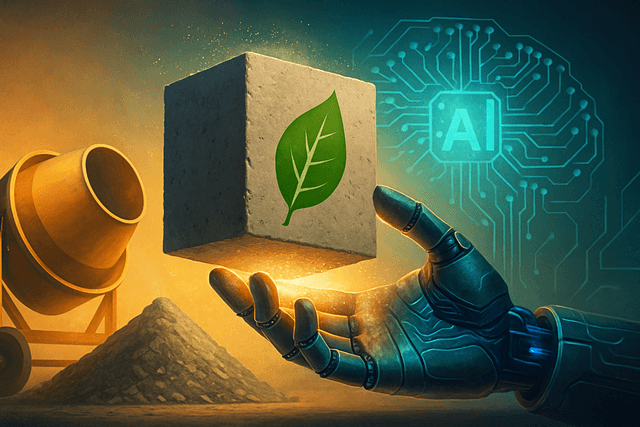A groundbreaking artificial intelligence system developed by researchers in Switzerland is poised to revolutionize one of the world's most carbon-intensive industries: cement production.
The team at the Paul Scherrer Institute (PSI) has created what they call a "digital cookbook for climate-friendly cement" - an AI model that can rapidly design new cement formulations with dramatically lower carbon footprints while maintaining necessary structural properties.
"This allows us to simulate and optimize cement formulations so that they emit significantly less CO2 while maintaining the same high level of mechanical performance," explains mathematician Romana Boiger, lead author of the study published in Materials and Structures in June 2025.
The significance of this innovation is difficult to overstate. Cement production accounts for approximately 8% of global carbon dioxide emissions - more than the entire aviation sector worldwide. About half of these emissions come from the chemical reaction that occurs when limestone is heated to produce clinker, the main binding component in cement.
Traditionally, developing new cement formulations requires extensive laboratory testing, with each iteration taking weeks or months. The PSI team's AI approach accelerates this process dramatically, using neural networks trained on data from their GEMS software, which simulates the complex chemical reactions during cement hardening.
"Instead of seconds or minutes, the trained neural network can now calculate mechanical properties for an arbitrary cement recipe in milliseconds - that is, around a thousand times faster than with traditional modeling," Boiger explains.
Rather than randomly testing recipes, the researchers employed a reverse approach, using genetic algorithms to identify specific formulations that meet predetermined targets for both CO2 emissions and material strength. Several AI-identified cement recipes have already shown strong potential for reducing emissions while maintaining quality.
The interdisciplinary project brought together cement chemists, thermodynamics experts, and AI specialists as part of the Swiss Centre of Excellence on Net Zero Emissions (SCENE). While the current study serves primarily as a proof of concept, the researchers plan to extend their model to consider additional factors like raw material availability and environmental conditions.
"This is just the beginning," says Nikolaos Prasianakis, who initiated the study. "The time savings offered by such a general workflow are enormous - making it a very promising approach for all sorts of material and system designs."

